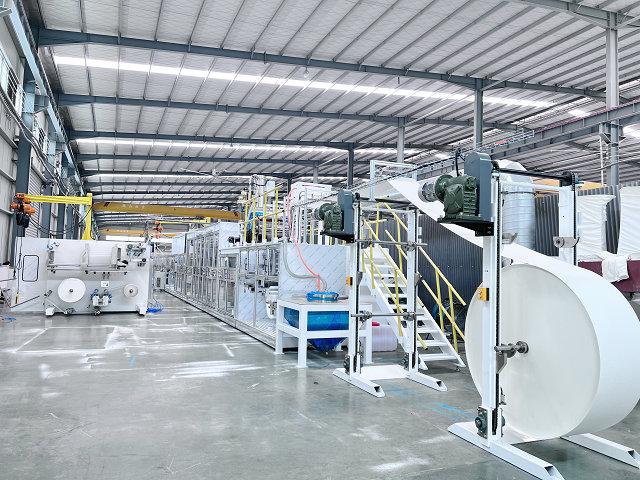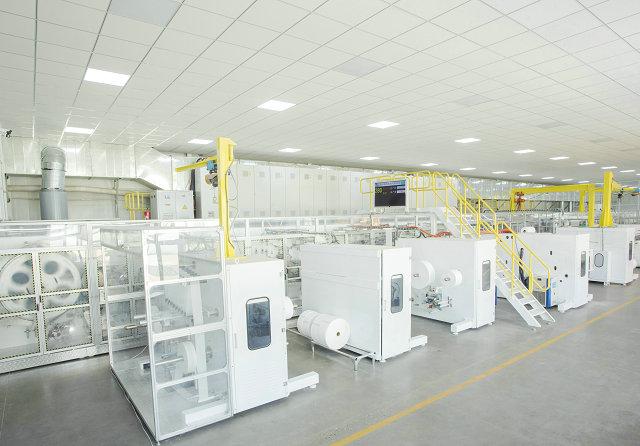Author:Haina Machinery Factory FROM:Diaper Machinery Manufacturer TIME:2023-10-16
Disposable nappy machines play a vital role in the hygiene products industry, providing convenient solutions for diaper production. To ensure the smooth operation and longevity of your machine, it is essential to follow proper maintenance practices. This article will provide you with valuable tips on how to effectively maintain your disposable nappy machine.

One of the most important maintenance tasks for your disposable nappy machine is regular cleaning. With the continuous production of diapers, various debris such as fluff, adhesive residue, and dust can accumulate inside the machine. This build-up can affect the machine's performance and ultimately lead to breakdowns.
To clean the machine, start by turning off the power and disconnecting it from the power source. Use a soft brush or vacuum cleaner to remove loose debris from the machine's exterior. Then, open the machine and carefully clean the interior components, including the cutting mechanism, conveyor belts, and rollers. Pay special attention to areas prone to accumulation, such as the glue application system. Use a damp cloth or mild detergent to clean these parts. Avoid using abrasive materials that may damage the machine.
Regular cleaning should be performed at least once a week, or more frequently if necessary, to maintain optimal machine performance.

In addition to regular cleaning, routine inspections are crucial to identify any potential issues with your disposable nappy machine. These inspections enable you to detect early signs of wear and tear, loose connections, or damaged components that may affect the machine's efficiency and result in costly repairs or downtime.
Inspect all moving parts, such as gears, belts, and chains, to ensure they are properly lubricated and functioning smoothly. Check for any loose screws or bolts and tighten them if necessary. Examine the electrical system, including wires and connectors, for signs of damage or overheating. Replace any worn-out or damaged parts promptly to prevent further damage to the machine.
Perform routine inspections on a monthly basis or as recommended by the machine manufacturer. Keeping a detailed maintenance log can also help track the machine's performance and identify any recurring issues that need attention.

To maintain the long-term reliability of your disposable nappy machine, it is essential to follow the manufacturer's recommended servicing schedule. Scheduled servicing involves a comprehensive examination and maintenance performed by qualified technicians to ensure the machine operates at peak performance.
During scheduled servicing, the technician will inspect and replace worn-out parts, clean and lubricate components, and perform necessary adjustments to optimize the machine's performance. They will also identify potential problems that may arise in the future and take preventive measures to minimize downtime and production interruptions.
By adhering to the scheduled servicing recommendations, you can extend the lifespan of your machine and reduce the risk of unexpected breakdowns, saving time and money in the long run.
In conclusion, regular cleaning, routine inspections, and scheduled servicing are crucial for maintaining the performance and longevity of your disposable nappy machine. By following these maintenance tips, you can ensure that your machine operates smoothly, maximize efficiency, and minimize downtime. Remember, a well-maintained machine is key to meeting the demands of the fast-paced hygiene products industry.
